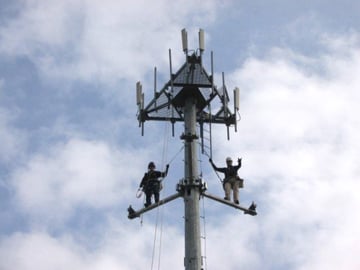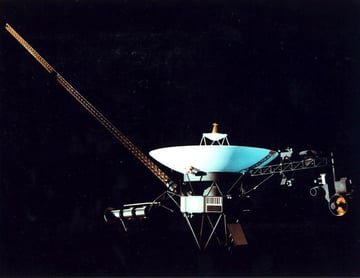- Products
- All Products
- RF PA Extension Kit
- Wireless Microphone Upgrade Packs
- In-Ear Monitor Upgrade Packs
- Wireless Microphone Antennas
- Wireless In-Ear Monitor Antennas
- Antenna Distribution for Microphones
- Antenna Combiners for In-Ear Monitors
- Multi-Zone Antenna Combiners
- Spectrum Tools
- Accessories, Cables and Parts
- Solutions by Venue
- Resources & Training
- Performance Tools
- About Us
December 14, 2014
The Earth Speaks, and You Can Hear It with a Radio Receiver
Written by: Alex Milne
Planet earth churns out a wide variety of natural radio waves. Most of them are very, very low in frequency, sometimes as low as just a few hertz. Receivers can pick up these waves and convert them into sounds. Haunting, ethereal sounds. Here is a brief sampling of the cornucopia of earth radiation.
Below is a recording of solar winds blowing across the upper atmosphere as they pass over the earth. Sometimes these winds excite sparse gasses enough to spark very high frequency waves--light--and produce what we know as the aurora borealis. But they can also produce enough vibration in the magnetosphere to be detected by the antennas down here on earth. I suggest you listen to the very low frequency recording below while watching the video above. It is, literally, nature's soundtrack to this stunning time-lapse film captured by the International Space Station as it passed over a geomagnetic storm in the south Indian Ocean.
Since wavelengths for these frequencies are extremely long, they may arrive from hundreds or thousands of miles away, or deep inside the earth. You might hear a large number of lightning strikes from all across the earth from your living room. Radio enthusiasts dub the cascading sounds of multiple strikes across the earth a “chorus,” and the shrill rising tones “whistlers.”
Other planets have these noises, too. When the Voyager 1 probe passed by Jupiter, it recorded detailed electromagnetic readings from the planet’s atmosphere, and beamed them back toward earth.
Very, ultra, and extremely low frequencies are also used for radio communications. Their low frequency makes them unsuitable for any high data rate transmission, but their long wavelengths make them ideal for long distance communications. Submarines use them for this reason, they can dial back to the mainland from underwater, from anywhere in the world. Take a listen.
Leading video taken by the International Space Station. Audio Courtesy, SP McGreevy, "Space Audio," and "Dorset Radio."
Tag(s):
Alex Milne
Alex Milne was Product Marketing Manager and Digital Marketing Manager for RF Venue, and a writer for the RF Venue Blog, from 2014-2017. He is founder and CEO of Terraband, Inc., a networking and ICT infrastructure company based in Brooklyn, NY., and blogs on spectrum management, and other topics where technology,...
More from the blog

RF Spotlight Antenna
RF Venue Co-Founder Robert Crowley Talks Product Design
10 min read
| May 31, 2015
Read More

Knowledge Guides
Reduce, Reuse, Rejoice: The Magic of Frequency Reuse
11 min read
| December 15, 2014
Read More

A Deep Space Holiday Greeting: Brought to You by Voyager's Radio Antenna
3 min read
| December 14, 2014
Read More
Subscribe to email updates
Stay up-to-date on what's happening at this blog and get additional content about the benefits of subscribing.
